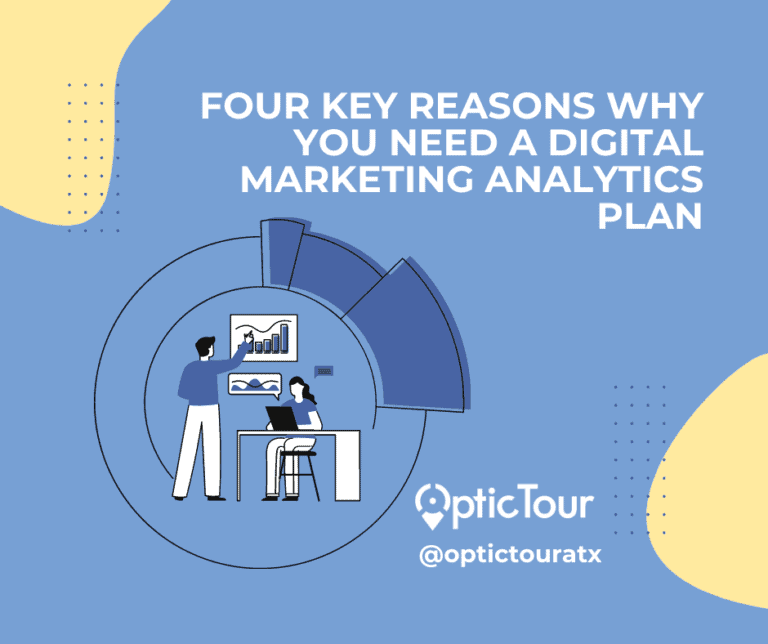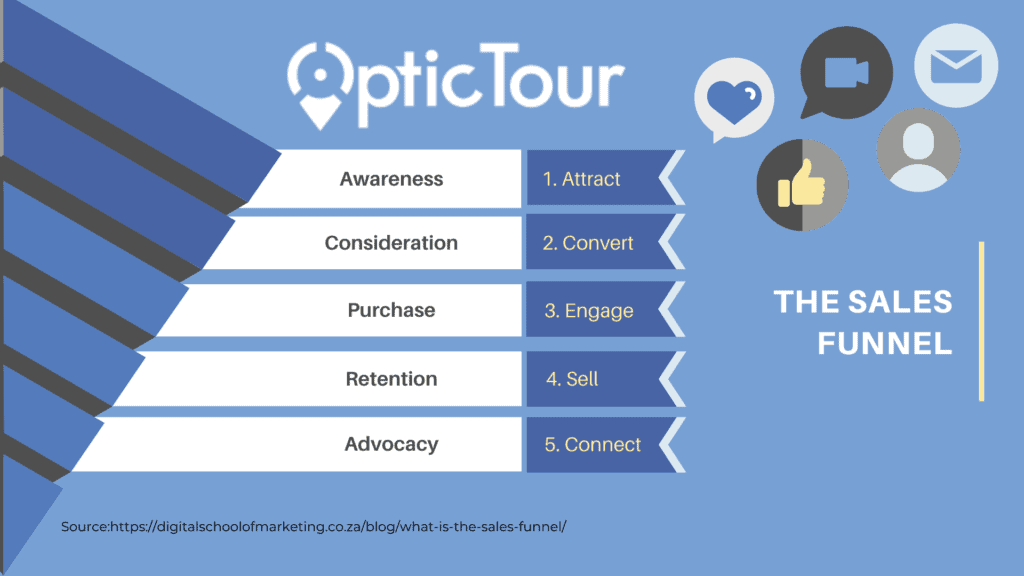Four Key Reasons Why You Need a Digital Marketing Analytics Plan
- By Marilee Bodden
- November 19, 2021
- 4:48 pm

Digital marketing analytics is becoming the main avenue for understanding and digesting the effectiveness of campaign strategies with the explosion of digital marketing. It can be useful in understanding what’s working and what’s not working, making your marketing efforts more efficient, and even predicting the success of future campaigns.
Imagine this: You’re a business owner that invested capital into a digital marketing campaign on social media sites (Facebook, Tik Tok, Instagram, and LinkedIn) as well as advertisements on Google to increase your brand awareness and compete with well-established brands. Your business gains some traction and customers from these campaigns, but you don’t know where they’re coming from or how you can improve your campaign for next time. Adding analytics to the equation helps you answer all those questions and more!
Now, we’re going to explore some key reasons why you should implement data analytics into your marketing campaigns.
No. 1: Your Past can Predict your Future
Learning from past success and mistakes is an essential part of the growth and success of your business. This is no different with digital marketing.
Analyzing the ability of your past campaigns to generate MQLs (marketing-qualified leads) and eventually, SQLs (sales-qualified leads) and conversions can help to improve your future campaigns’ success. According to Hubspot, this will help you understand how your marketing initiatives stack up against each other — and other companies — to unpack how you’re achieving your business goals and where to spend your money to maximize your ROI.
There’s no flying blind when it comes to digital marketing analytics. You’ll know what’s working and what’s not, leading to more efficient and effective marketing campaigns
Here are some basic metrics that you should consider tracking to get your data analytics plan off the ground:
The click-through rate is the percentage of total clicks on a link, ad, or email in proportion to how many times that ad is viewed.
Submissions are the percentage of total people who filled out and submitted your web form.
The number of conversions divided by the total number of visitors.
The leads to close ratio is the percentage of leads converted to customers as compared to the total number of leads.
No. 2: Discovering Customer Life Cycle
Digital marketing analytics can also show you where your customers are coming from and where they fall in the marketing/sales funnel. By using specific metrics, you can discover this. These metrics allow you to target channels such as Instagram, Facebook, Youtube and email clients to understand your customer base and develop a plan to target customers from different channels.

Furthermore, you can discover where potential customers fall in the marketing/sales funnel. Pushing potential customers down this funnel will lead to more conversions, which will increase revenue and growth for the company. It can be very useful to understand and target specific customers at specific points in the funnel to drive them towards conversion. So what does that mean? At each stage of this funnel or customer life cycle, customers believe certain things, act in specific ways, and are attracted to different products.
For example, a mom searching the internet for Christmas gifts ideas in early October for the whole family is going to be attracted by a wide range of advertisements, but she might not buy anything at that point. A husband looking for a necklace for their significant other, two weeks before their birthday, is going to be attracted to more specific, targeted ads and is more likely to buy something right then. Both of these people are in different stages of the buyer’s cycle, meaning advertisements that work on one might not work on the other and vice versa.
This information will help you develop a strategy to attract customers while also drastically increasing your marketing efficiency!
No. 3: Understanding Website Success
Data analytics or digital marketing analytics can also give you insight into how your website is performing daily. This includes where users go on your website, how long they spend on a particular page, what they click on, and even how your website ranks on search engines. Website data allows you to optimize your website, make sure everything is working efficiently and effectively, and gives you an idea of how to improve.
Your website is important because it is one of the first things that potential customers see when they are attracted by a digital marketing campaign. If your website is aesthetically pleasing, easy to use, and runs efficiently, then your potential customers can find what they are looking for and request your product or service. Your potential customers will most likely lose interest if your website is not running smoothly and is not easy to use. You will most likely lose those conversions and any potential future ones as well. It is not just about your digital marketing campaign — every part of your digital footprint works to lead you to a sale and digital marketing/data analytics can help you improve that.
If you are interested in learning more about website responsiveness, platform setup, and optimization head over to our blog: The No. 1 Thing Most Digital Marketing Plans Miss
No. 4: Visualizing ROI
While all of the above is effective in helping you understand your customer, most people seek to understand how they can stretch a dollar and make their capital investments more successful. This is exactly the reason why you should be using digital marketing analytics! Doing so will show you where your money is going and how effective it is at generating leads and conversions. This will give you the ability to reinvest in certain channels if they’re working, or reassess your efforts and invest your money into something more efficient.
Having the visibility to see what’s working and what’s not is what digital marketing analytics are all about. Your company will be more effective in your marketing efforts when these issues are addressed, leading to more customers and a better return on your investment.
Moving Forward
Thank you for taking the time to read our blog! We hoped this information helped to explain the importance of digital marketing analytics for your business.
If you have any questions or would like to learn more about the best analytics to look at for your specific business, our eager team of skilled creatives and analytics professionals here at OpticTour are ready and willing to lend you a helping hand.
Importance of OpticTour Analytics:
- Presenting the Right Data!
- Goal setting support
- Means to measure success
- No fragmentation – all in one reporting
- Digital Advertising Analytics

© 2021 OpticTour. Trademarks and brands are the property
of their respective owners.
Google and the Google logo or any other related screenshots are registered trademarks of Google LLC, used with permission.
